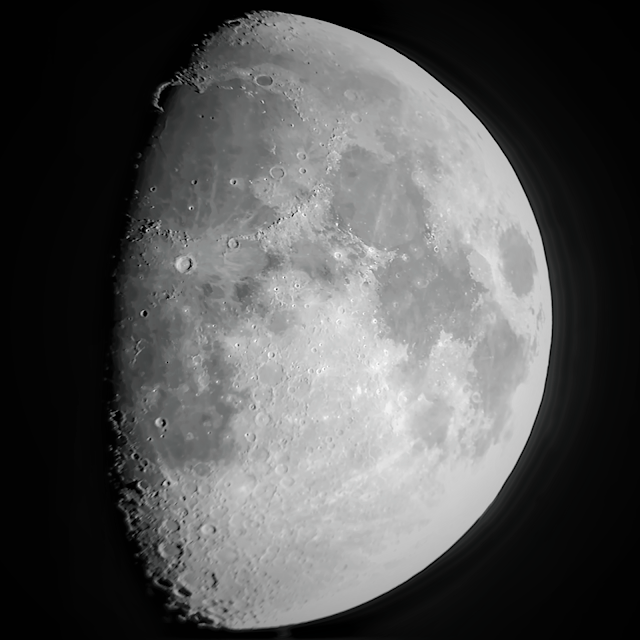Stellar Moonshots - Capturing the Moon's Brilliance, Tips and Tricks
Here are some tips and tricks to enhance your moon-gazing experience and capture the moon's brilliance with your telescope:
- Choose the right equipment: Invest in a good quality telescope with a sturdy mount and a decent aperture size. A larger aperture will allow more light to enter the telescope, resulting in clearer and more detailed images of the moon.
- Learn about lunar phases: Understanding the moon's phases can help you plan your observation sessions. The most interesting features, such as craters and mountains, are often more prominent along the terminator (the line between light and dark), especially during the first quarter and last quarter phases. Use free software such as Stellarium, AstroHopper, and Virtual Moon Atlas to better understand and comprehend the beauty of lunar features.
- Experiment with magnification: Try using different eyepieces to vary the magnification level. Higher magnification can bring out finer details on the moon's surface, but it can also make the image dimmer and more susceptible to atmospheric turbulence. Experiment with different magnification levels to find the balance that works best for you.
- Use a stable phone adapter or eyepiece camera: Stability is crucial when observing or capturing images of the moon. Even the slightest shake can greatly affect image quality. Try to not move the telescope as much as possible.
- Optimize focus: Achieving precise focus is essential for capturing sharp and clear images. Use the telescope's focusing knobs to fine-tune the focus until the lunar features appear crisp and well-defined. Also, sometimes, the AF (auto-focus) in phone cameras do not work as need so switch to manual mode and change the focus until the image is crisp and clear.
- Experiment with exposure/ISO settings: If you are attempting astrophotography of the moon, experiment with exposure settings to capture the moon's details effectively. Start with a lower ISO setting to minimize noise, and adjust the exposure time to prevent overexposure of the moon's bright surface. I usually use 1/200 or sometimes 1/150.
- Take multiple shots and use image stacking: To enhance the quality and details in your images, take multiple shots of the moon and use image stacking techniques. Image stacking involves combining several frames into a single image, reducing noise and enhancing clarity. Also take a video recording to gather as many frames as possible.











Comments
Post a Comment